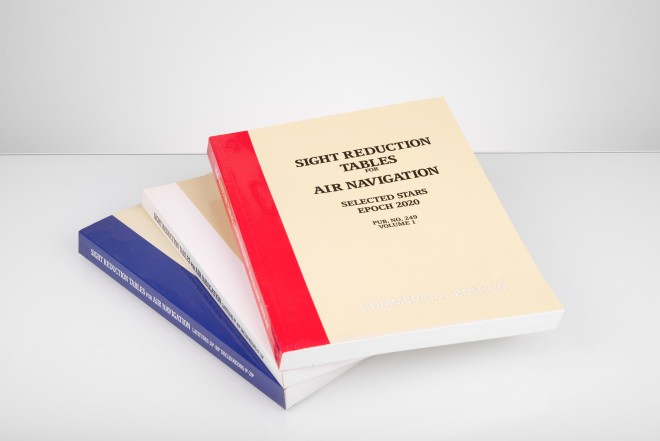When buying a new sextant and the associated entry into celestial navigation, the question often arises which sight reduction tables we recommend. Since this is more of a personal decision you will find the differences between the HO249 and HO229 as follows.
Sight Reduction Tables for Air Navigation (HO249)
The HO249 are the most commonly used tables, and probably the easiest to learn celestial navigation. The HO249 were created for air navigation and consist of 3 volumes:
| Volume | Coverage | Validity |
| 1 | Selected fixed stars with declination up to 80° and for star advance calculation | 5 years |
| 2 | Geographical latitudes 0°-40° Declination up to 29° | unlimited |
| 3 | Geographical latitudes 39°-89° Declination up to 29° | unlimited |
Sight Reduction Tables for Marine Navigation (HO229)
The HO229 were created for marine navigation. They consist of nine volumes, for the respective latitudes in 15° intervals:
| Volume | Geographical latitude | Validity |
| 1 | 0°-15° | unlimited |
| 2 | 15°-30° | unlimited |
| 3 | 30°-45° | unlimited |
| 4 | 45°-60° | unlimited |
| 5 | 60°-75° | unlimited |
| 6 | 75°-90° | unlimited |
Differences
- The HO229 tables are more accurate by one decimal place, due to the data in the HO249 tables are rounded to the whole degree.
- In addition, the HO249 are limited to declinations up to 29° (volumes 2 and 3) and 80° (volume 1).
- The HO229, on the other hand, does not have this restriction.
- The tables have a different structure, so finding and reading the values is different. An example of the different structure can be seen in the following example:
Decision:
- The required latitudes form the basis in selecting the appropriate volumes.
- The choice between HO229 and HO249 is more of a personal decision. In many seminars and textbooks, the HO249 tables are used.
- A later change is possible, but in the beginning it will be more difficult to find and read the values due to the different structure of the tables.





